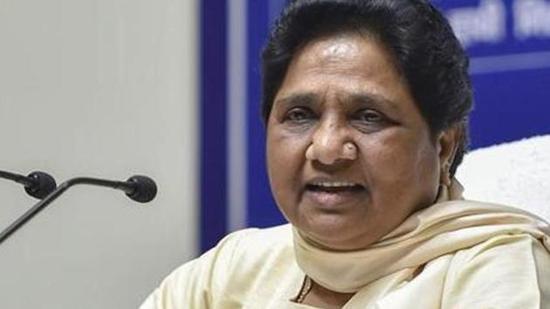Mayawati plays up ‘soft Hindutva’ as BJP readies for Dalit-connect rallies
Some BJP leaders feel that Mayawati’s play of ‘Hindutva’ has been forced by the party’s decision to expand its appeal among Jatavs, the Dalit sub-caste to which Mayawati belongs.
LUCKNOW: In line with majority of political parties tapping soft Hindutva ahead of the 2022 UP assembly polls, Bahujan Samaj Party (BSP) chief Mayawati said if elected to power her government would continue with the present Bharatiya Janata Party (BJP) government’s focus on development of Hindu religious cities of Ayodhya, Mathura and Kashi (Varanasi) and other religious places.

“My government will not hamper the ongoing development work in Ayodhya, Mathura and Kashi and ensure that all projects get completed,” she declared on Saturday.
The BSP, seeking a replay of the Dalit-Brahmin social chemistry that propelled the party to power on its own strength in 2007, has been wooing Brahmins.
Ayodhya, Mathura and Kashi or Varanasi are the three Hindu religious hotspots in UP where the BJP government in UP has been pushing for development. Projects worth several crores have been started in these places by BJP and these projects,, especially in Ayodhya, are being monitored by Prime Minister Narendra Modi’s Office (PMO) and chief minister Yogi Adityanath. Mayawati, however, claimed that the ruling party had copied the BSP model by launching these projects in Hindu hotspots.
“The BJP, taking a cue from the BSP government,, introduced development projects in Ayodhya, Varanasi, Mathura and other religious places. But these projects are as yet incomplete and we will ensure that they projects get completed,” she said, making it evident that along with her Dalit politics she would add a dash of soft Hindutva to her UP poll campaign.
Some BJP leaders felt that Mayawati’s play of ‘Hindutva’ had been forced by the party’s decision to expand its appeal among Jatavs, the Dalit sub-caste to which Mayawati belongs.
“There is a feeling that there has been a steady breach in Mayawati ji’s Dalit vote bank, which has been leaning towards the BJP, especially since the 2014 Lok Sabha elections. After its sweep in 2014 LS polls, the BJP had won 71 of the 85 seats reserved seats in 2017 UP polls, underlying the significance of Dalits along with others in BJP’s handsome win. In 2019, the BSP did win 10 Lok Sabha seats in alliance with Samajwadi Party but 2022 is her big test, especially as BJP, with its development plank and religious appeal, has begun targeting Jatavs too,” said Irshad Ilmi, a political observer.
He felt that Mayawati had responded to the BJP’s attempts to poach on her core Dalit Jatav voters, by playing the Hindutva card.
The BJP has only recently decided to get Baby Rani Maurya, its current national vice president, a Jatav, to hold rallies across UP with the avowed intention of getting Jatavs to veer towards the BJP.
Maurya was recently made to quit as Uttarakhand governor and made party’s national vice president, making it evident that the BJP leadership had planned to woo Maya’s core supporters through her. The BJP has also elevated another woman Dalit leader Kanta Kardam from Meerut, by making her a Rajya Sabha MP. Another Jatav in UP BJP government is GS Dharmesh, a minister of state and who like Maurya, also hails from Agra where Dalits make up about 20 per cent of the population.
Overall, Dalits make up about 21 per cent of UP’s electorate and of these, Jatavs make up for around 11 per cent. Mayawati’s plan is to get around 10 to 11 per cent Brahmins in UP too to support her as they did in 2007 when she had won 206 of the 403 seats, say party leaders.
“In Prayagraj, while attending a ‘prabuddh varg sammelan’ Satish Chandra Mishra had played up the 2007 slogan: “Brahmin shankh bajayega, haathi chalta jaiyega (Brahmins will blow the conch shell, elephant (BSP’s symbol) will triumphantly march ahead),” a BSP leader said, adding that the focus was on expanding the party’s voter base while holding on to one’s base vote. “That’s the model all the political parties are following. One distinct advantage that the BSP has over others is that in our party, the command structure is clear. Lesser time is wasted, so leadership’s directions are quickly implemented,” the BSP leader said.




